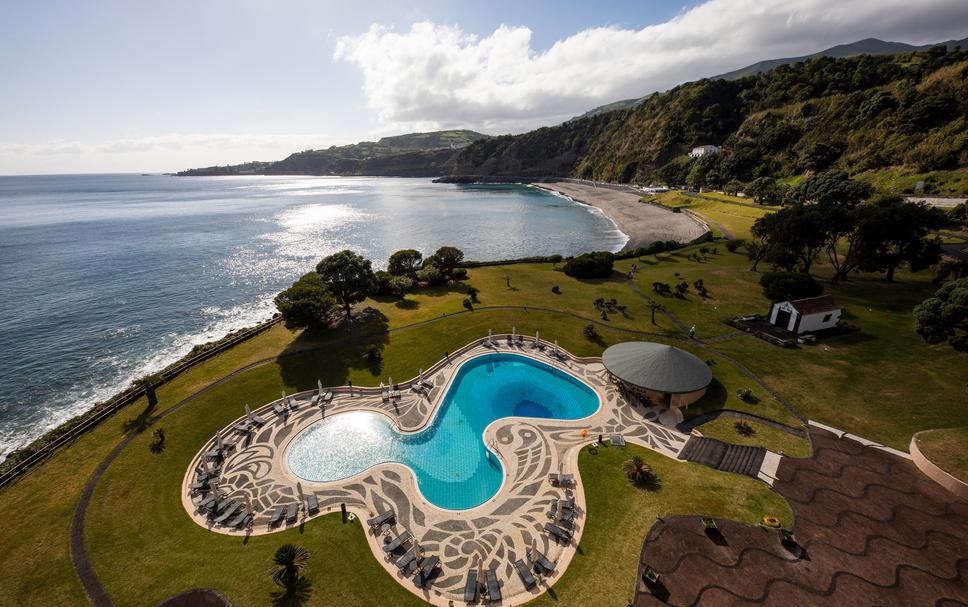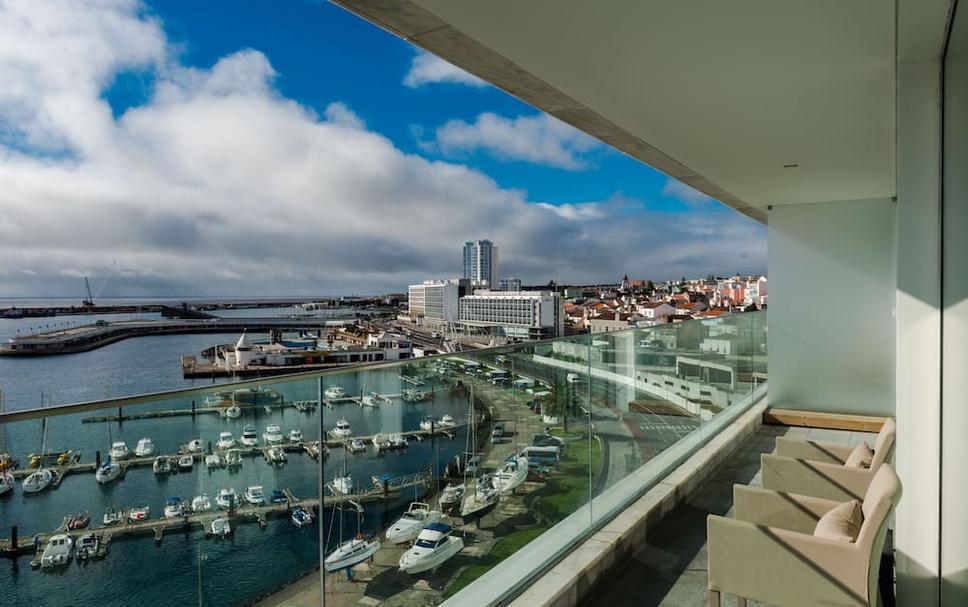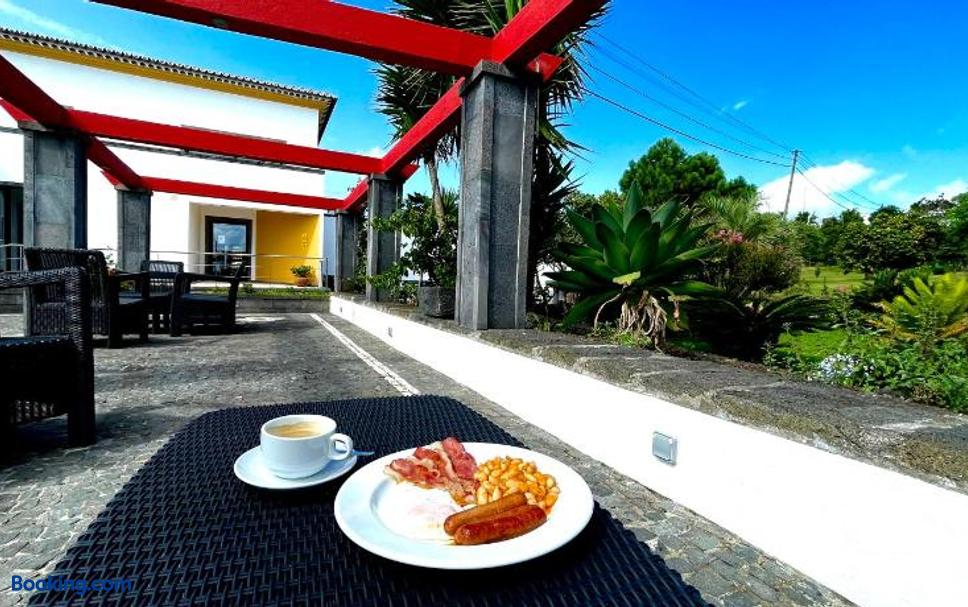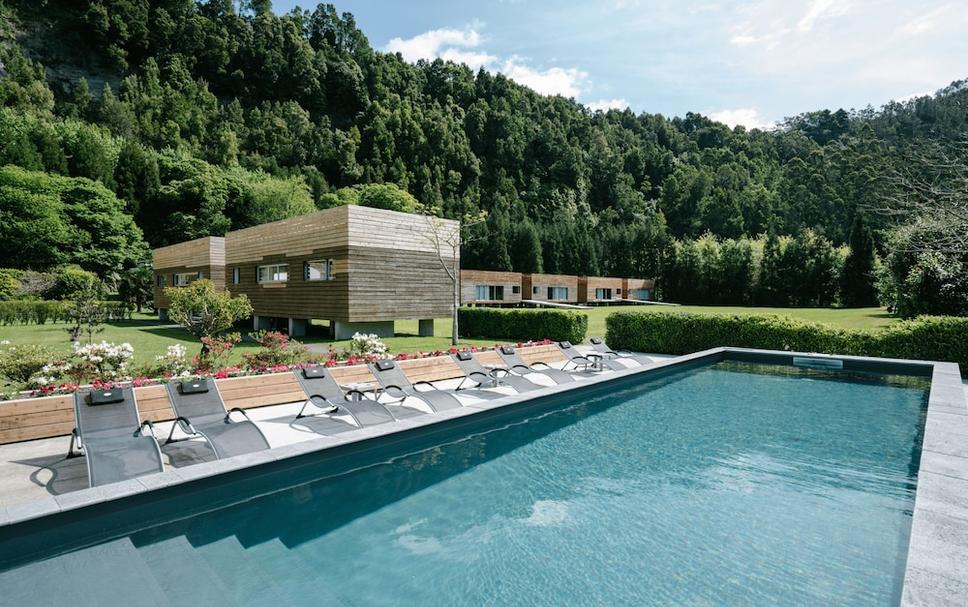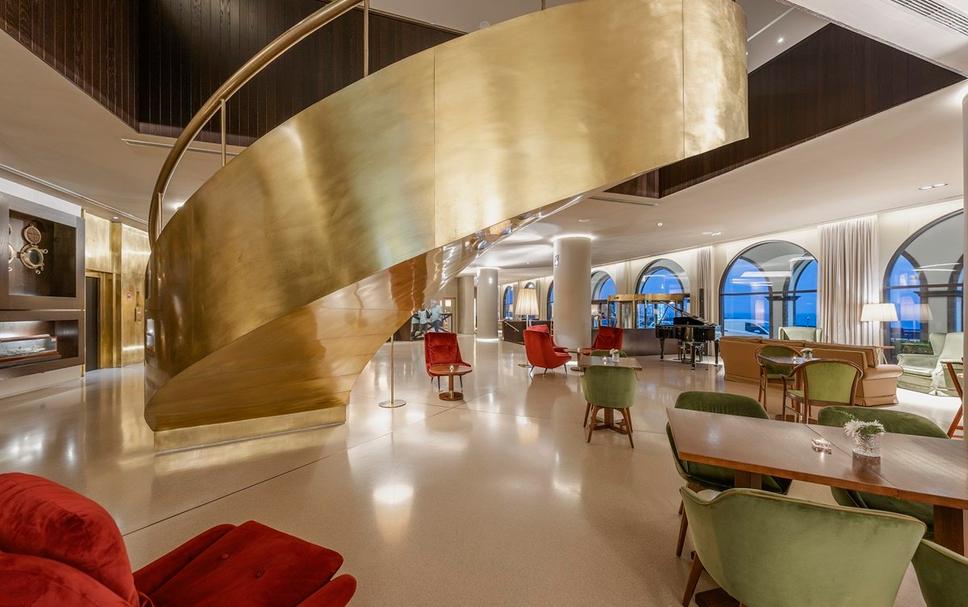Note: The Travel Awaits team regularly updates content to provide the latest, and most accurate information to our readers. The updated content in this article may not reflect the views or opinions of the original author.
Old Town San Diego is considered the birthplace of California. In 1769, Father Junipero Serra built the first of 21 missions next to the Presidio — a Spanish fort on a hill overlooking the San Diego River. These missions became the cornerstone of California’s colonization. A community formed when Spanish soldiers began building residences below the hill in the 1820s. Today the area, located in the heart of the city of San Diego, contains historic sites, shopping, restaurants, and attractions within walking distance of each other.
At one end, Old Town San Diego State Historic Park is an odd but fun mix of history, modern shopping, and entertainment. Restored and reconstructed buildings house museums, shops, and restaurants, while staff in period costumes recreate San Diego’s past from 1820 to 1870. Entrance to the park is free. Be sure to check out Balboa park in San Diego!
Following San Diego Avenue eastward takes you into Old Town Village, where palm tree-lined streets contain a variety of shops, restaurants, and galleries, many also in restored buildings. As you walk through Old Town, the park and village blend into each other. The entire area retains an “old town” ambiance that feels far removed from the nearby high rises of downtown San Diego.
One can spend a couple of pleasant hours, an entire day, or several days exploring Old Town. It is easily reached by public transport. Several bus routes include stops at Old Town Transit Center. The light rail trolley system stops at Old Town Station. Hop-on hop-off Old Town Trolley Tours stops at Old Town Market on Twiggs Street. Those who drive will find free parking. The Old Town Market website contains a map showing parking lot locations.
There’s another historic station in San Diego by the name of Liberty Station.
What To Do In Old Town San Diego
1. Walk Through History
Walking through Old Town San Diego State Historic Park feels like stepping back in time to the early days of San Diego. The more than 20 buildings along the wide pedestrian-only streets of the park create a small village that is easily walked. In the early 1800s, sun-dried adobe brick was the traditional building material. Several original adobes remain. You’ll also find many 19th-century buildings.
La Casa de Machado y Stewart has an extensive period garden. La Casa de Machado y Silvas was a restaurant in 1852. A restored original adobe mansion from 1869 now houses the Cosmopolitan Hotel. Other restored buildings include the first brick building built in San Diego in 1847 and a wood frame building from 1865 that was San Diego’s first public schoolhouse.
Reconstructed buildings include a two-story hotel, the home of California’s first sheriff, and a pre-frame house that had been accidentally put together inside out and served as a store, restaurant, and boarding house.
You’ll find more historic buildings in the village outside the state park. The Spanish architecture, stained glass windows, and interior wood beams of the Church of the Immaculate Conception make it a popular photography subject. Heritage County Park on Heritage Park Row at the edge of Old Town contains restored and relocated Victorian homes as well as San Diego’s first synagogue.
2. Living History Demonstrations
Living History Demonstrations bring the past to life. Historical reenactors engage visitors in immersive experiences, showcasing daily life, trades, and traditions. This charming Californian reenactment tradition offers a captivating glimpse into the vibrant history, creating a memorable and educational journey for those exploring the living local heritage.
Every Wednesday and Saturday, staff and volunteers at Old Town San Diego State Historic Park demonstrate activities that would have taken place in the 1800s. These living history demonstrations include blacksmithing, carpentry, and games. Activities on display vary from week to week and may include soap-making, spinning wool, quilting, and weaving.
When I visited, mountain men in period costumes sat in a circle beside an old covered wagon and played fiddles, banjos, and guitars. See Old Town San Diego’s history page for more information.

3. Free Museums
Several of the buildings in Old Town State Historic Park house museums. In some, historic furnishings showcase the use of the building in the past and add to your feeling of having stepped back in time. Others contain a collection of historic artifacts and stories. The museums are free and relatively small, making it easy to pop in and out of several during your visit.
Seeley Stables, which was the Yuma/San Diego stage stop in the 1850s, houses a collection of vintage carriers and transportation memorabilia. Colorado House, originally a hotel, houses the Wells Fargo Museum showcasing the history of the stagecoach company. Displays include a historically furnished agent’s office and an 1868 stagecoach.
There is an old jail at the back of the San Diego Courthouse. You can view the original print room containing a Washington hand-press and the editor’s office in the San Diego Union Building. La Casa de Machado y Silvas recreates the Commercial Restaurant.
La Casa de Estudillo is an original adobe mansion owned by a distinguished family during the Mexican Period. The house is built around a courtyard. Rooms have been furnished in period style to tell the story of the Estudillo family. The grounds include a store (the family rented space to a shopkeeper) and an outdoor adobe brick oven.
4. Shop in San Diego Old Town
You’ll find unique items including artisan wares, souvenirs, art, clothing, colorful Mexican handicrafts, and Indian jewelry in stores throughout Old Town San Diego. You’ll find fresh homemade taffy, gemstones, minerals, and leather goods in Old Town San Diego State Historic Park.
At Toby’s Candle and Soap Shop, you can make your own candles. Old Town Market is an open-air courtyard offering handcrafted trinkets, clothing, and accessories traditional to the Mexican culture. The cluster of open-air stands and small boutiques in Bazaar del Mundo sells Mexican copperware and hand-crafted tiles among other items.

5. Whaley House Museum
The brick Whaley House Museum on San Diego Avenue is known as one of the most haunted houses in America. Built in the Greek Revival style in 1857 as a family home for businessman Thomas Whaley, rumors of ghostly residents have existed since the house was built.
Purported ghosts include a drifter and thief who was hanged on the spot five years before the house was built, a young woman, a young girl, and Thomas Whaley and his wife, Anna. The house has operated as a museum since 1960 and interprets the period from 1857 to 1885 when the Thomas Whaley family lived in the house.
There are a couple of other historic buildings on the grounds. The Verna House, an 1870s French Mansard, houses the museum’s gift shop. The 1850 wood-frame and adobe Derby-Pendleton House was a prefab home built in 1850 in New Town San Diego (San Diego’s current downtown area) and moved to Old Town around 1851. It is not open to the public.
6. Fiesta De Reyes
Behind a fountain in Old Town State Historic Park, a gateway with adobe side posts and a timber-beam top leads into a landscaped courtyard. Bright colors, stone pathways, mosaic tile work, sounds of Latin music, and mouth-watering aromas in Fiesta de Reyes evoke a feeling of Mexico.
19 independent shops invite you to browse through a variety of specialty items that include olive oil, handcrafted chocolate, jewelry, toys, garden items, art, jerky, and root beer. Soak in the atmosphere with some Mexican food and an oversized margarita or a shot of tequila on the patio of Casa de Reyes surrounded by lush gardens and with a view of the courtyard stage, where you may hear a mariachi band or see folkloric dancers.
Fiesta de Reyes bills itself as a place “where history lives and the fiesta lives forever.” You’ll certainly want to linger here and soak up that fiesta feeling.

7. Presidio Park
Presidio Park is located just above Old Town State Historic Park. It is the site of the original Spanish presidio and mission. The Junipero Serra Museum in the park explores the earliest history of San Diego and the Presidio in a late 1920s building that was designed to resemble the early California missions.
Museum entry is on a donation basis. Presidio Park also contains a number of walking trails in a natural refuge and The Old Historical Trail, a self-guided tour with interpretative signage.
8. Mormon Battalion Historic Site
The Mormon Battalion Historic Site commemorates the journey of the Mormon Battalion — a group of 500 Latter-Day Saints from Council Bluffs, Iowa, who joined the U.S. Army in 1846 (during the Mexican-American War) and came to San Diego. Entrance to the free, accessible site includes an interactive video tour, viewing of historical artifacts, and demonstrations on gold-panning and brickmaking.
9. Old Town Theatre
Each year the Cygnet Theatre group stages six or seven mainstage productions, ranging from classics and world premieres to Broadway-style musicals. The productions take place at Old Town Theatre, a 202-seat theater that opened in 1979.
10. Best Restaurants In Old Town San Diego
There is no shortage of restaurants in San Diego‘s Old Town. Some have ground-level or second-story patios that allow you to fully soak in the atmosphere of Old Town while dining. Old Town Mexican Café and Café Coyote are famous for their cantinas and tortilla ladies who hand-make tortillas on a grill in/near the dining areas for all to see.
While Mexican cuisine dominates in Old Town, you can also find other types of fare including Italian, American grill, fresh seafood, burgers, sushi, and even Victorian afternoon tea at the Cosmopolitan Restaurant in Old Town State Historic Park.
11. Take Part in Local Festivals
From the moment you step foot in Old Town, you’ll be transported to a world of festive fun and celebration.
The annual Cinco de Mayo Festival is a three-day event held from May 5 – May 7 that celebrates Mexico’s military victory over Napoleon III’s forces at the Battle of Puebla in 1862. It’s filled with music, live entertainment, a bunch of food, lucha libre wrestling, and so much more.
The traditional Mexican holiday of Día de los Muertos is celebrated each year just after Halloween in memory and honor of those who have departed. Traditionally, the streets near cemeteries are adorned with decorations, flowers, candy calaveras, and parades, while vendors sell offerings and altarpieces. This holiday is all about respect and love.
12. See Local Murals
Another way to get to know Old Town, San Diego culturally is by exploring the local art murals in and around Old Town that celebrate and mark the history and people that built the place. From hidden alleys to busy streets, they highlight San Diego’s unique landscape and show off the city’s creativity. Follow a trail through San Diego’s colorful street art to get a glimpse into diverse neighborhoods.
Pro Tip
Start your visit at the Robinson-Rose House in Old Town State Historic Park. This building is a replica of one that was built in 1853 as a residence and law office. Robinson-Rose House now serves as the park’s visitor center. Inside you’ll find displays and background information. The displays include a collection of ceramics found by archaeologists at the Presidio. Pick up brochures and maps to help guide your exploration of Old Town. You can also find a map on the Old Town Market website.
San Diego is certainly steeped in history. For a well-rounded trip, here’s our list of the best beaches in the area as well as our favorite hidden gems in San Diego.
FAQs
What Are the Best Hours to Visit Old Town San Diego?
Try to get there by 9:45 am to find a parking space. The Old Town museums and the Visitors Center inside the state historic park are open from Monday to Sunday from 10 AM to 5 PM. The museums close on Thanksgiving, Christmas, and New Year’s Day.
How Much Time Do I Need In Old Town San Diego?
Spending a fun half-day in Old Town sounds about right. Plan for a couple of hours of sightseeing, historic sites, shopping, and museums, followed by a meal.
Are There Any Events And Festivals in Old Town San Diego?
Yes, but it depends on the time of your visit. From Cinco de Mayo celebrations to the Day of the Dead, the area is always buzzing with cultural festivities and special events that add an extra layer of excitement to your visit.
How To Get To Old Town San Diego?
The easiest way to get to Old Town is by the San Diego Trolley. The trolley is very inexpensive and has a network all over San Diego. If you are traveling by car bear in mind that by 10 AM, especially on weekends, parking lots fill up fast.
What Food Is Old Town San Diego Known For?
Old Town stands out as one of the best places to get great Mexican food. From Americanized eateries to authentic Mexican establishments, you can get your fill of tacos, burritos, taquitos, and more here.





















